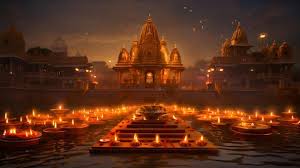
Kumbhabhisheka is a significant and elaborate temple consecration ritual performed to sanctify and energize the temple and its deities. It marks the re-consecration of the temple, ensuring that the divine energy is awakened and that the temple becomes a place of spiritual growth and connection for devotees. The term Kumbhabhisheka comes from the kumbha (pot), which symbolizes Lord Vishnu and is filled with holy water or sanctified liquids.
The ritual is performed when the temple has undergone renovation, new installations, or is celebrating a milestone. It is a highly auspicious event that attracts a large number of devotees. The ceremony involves ritual purification, the installation of deities, and the offering of prayers and offerings to invoke the blessings of the gods.
The Kumbhabhisheka puja begins with sankalpam (a formal prayer), followed by panchamrita (a mixture of milk, honey, curd, ghee, and sugar) being used to bathe the idols. The kumbha (holy pot) is placed near the main deity, and it is filled with water that has been sanctified with mantras. The water is then poured over the deity or the temple’s sacred pillars (dwajasthamba) in a ritualistic manner.
The Vedic hymns, chants, and mantras specific to the temple and deity are recited, and homa (fire sacrifice) may also be performed. Prasad (blessed food) is distributed among the devotees as a symbol of divine grace.
Kumbhabhisheka is believed to rejuvenate the spiritual energy of the temple, ensuring prosperity and spiritual protection for the temple and its devotees.

